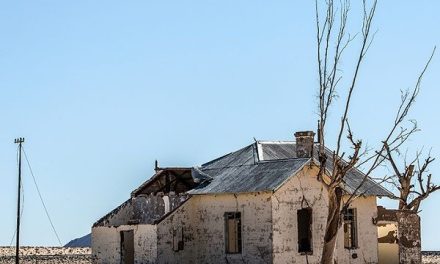
Don’t let the stats frighten you, they are showing improvement by the day

Anybody still doubting that a major economic revival is underway only needs to work through ten pages of daily bank liquidity statistics as published by the Bank of Namibia.
For the purpose of making a meaningful comparison, I have lifted the stats for January and for August to date. A game of statistical gymnastics followed which only people who are fond of juggling stats will understand.
Nevertheless, it transpired that for 19 working days in January 2017, average daily liquidity was a measly N$132 million per day. For seven trading days, local liquidity was negative sometimes by as much as N$300 million.
Compare this August to January and one finds that for the past 19 working days, the four major banks’ combined liquidity position has increased to an average of N$2,965,000,000 per day. That is N$2.7 billion and it is a far cry from the January figure.
In fact, it is more than 2,200% higher. All statisticians will immediately realise this is an impractical way to express percentages, so it is better expressed as a factor increase. Bank liquidity has improved by a factor of 22.4 over a period of roughly seven months. The turning point was the middle of May when there is a noticeable jump and after which we never had another day of negative liquidity.
Massaging the stats in a different way, one could also say that, were the economy to remain at January output levels, it would have taken six years to get back only to the 2016 level. The fact that this has been accomplished in just over six months, is perhaps the single most important indicator how momentum has grown since the beginning of the year.
What is also quite obvious from my rough comparison is that N$1.2 billion of outstanding construction invoices can not in one’s wildest dreams, restore the type of liquidity I have shown above. It means something else must also contribute to the regained economic momentum.
Another point that corroborates my revival thesis is offered by the statistics on M2 Money Supply. These are not measured daily but a monthly comparison between February and August shows a tremendous improvement. Whereas earlier in the year, monthly growth, year on year was only around 4.5%, it has now exceeded 7.8%. This, however must be interpreted with circumspect. The lower figure is a comparison to the first part of 2016 when the gravy train was still running full speed. This is a so-called high-base effect. The second figure is a comparison to the latter part of 2016, after the sheites have already hit the fan, a so-called low-base effect in turn. But the growth through this year, regardless of base effects, is still reassuring given that it is on its way to double.
Granted, I have not analysed the M2 stats in the same way I did the banking liquidity figures, but the trend is still unmistakable. If M2 continues to grow at this rate, by the end of the year, liquidity should have improved substantially again.
What is clear from the stats, is that we were in very serious trouble in January this year. What is also clear is that we are no longer in trouble. Were it not for the extraordinary shock to the financial system in 2016, current conditions would have seem closer to normal.
When an economy’s liquidity goes negative, many things happen. First, bank have to borrow from shareholders or from parent companies or from the central bank or list a bond. This scares banking people out of their wits. It also shakes the entire financial structure and confidence is lost.
This was most vividly illustrated by the banks’ save-now narrative which became very obvious during the second 2016 semester. It shows that banks were in danger of non-compliance with adequacy ratios.
But once the system has been scared like this, confidence is also shaken and every banker asks him or herself when the revival will start and can it be trusted.
Well, it has started and going by the figures, it is a private sector revival and not so much driven by government borrowings although I have noted that there is enhanced participation in both the money and the capital market. To substantiate, I have not lately heard of the need for any so-called “private placements” to fund the governments operational requirements.
The next stage in the consolidation will be when banks start lending again. The moment this happens, Private Sector Credit Extension will rebound, and about six months later, the whole economy should be operating well on a much wider front.
Of course I can not prove this, nobody can, but a realistic PSCE target of say 10% will help a lot to restore confidence. After that we can set a 12% target and then we are not far from the historical average of just over 13%.
People ask me how long will it take before the indicated improvement in banking liquidity filters through to the rest of the economy. The answer is easy: the sooner banks start lending, the faster the revival. The longer they delay, the longer it will take to get above an annualised growth rate of 3% which is about the minimum we should target.










































